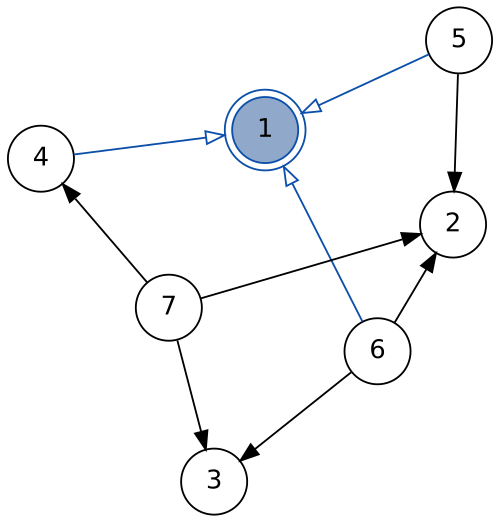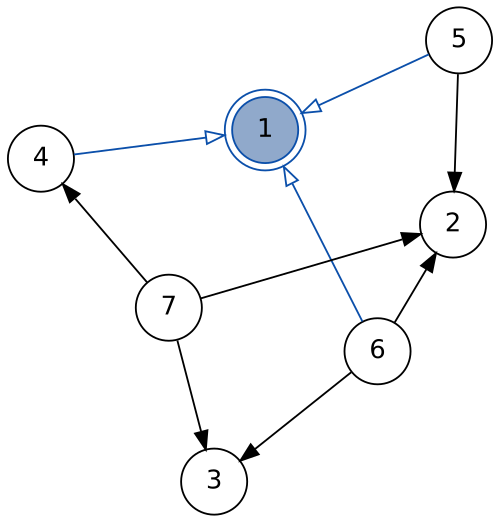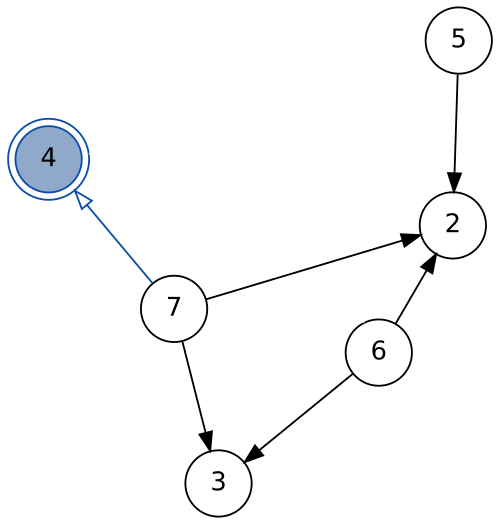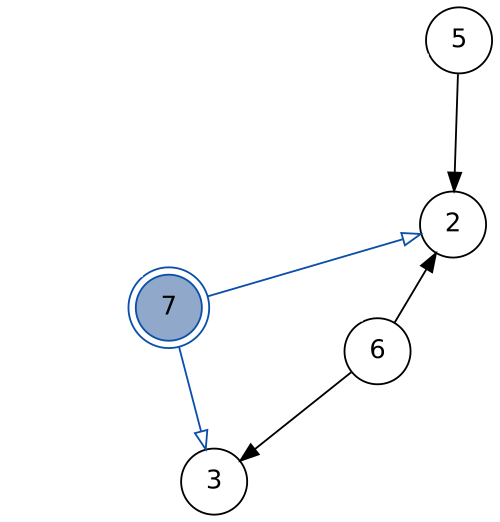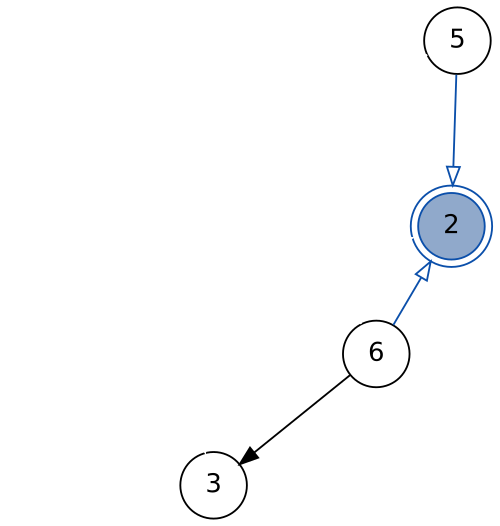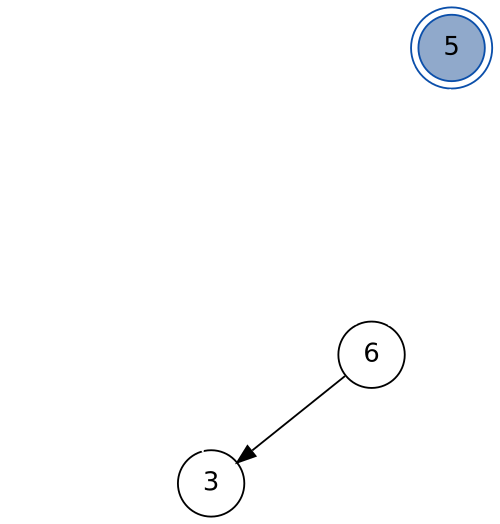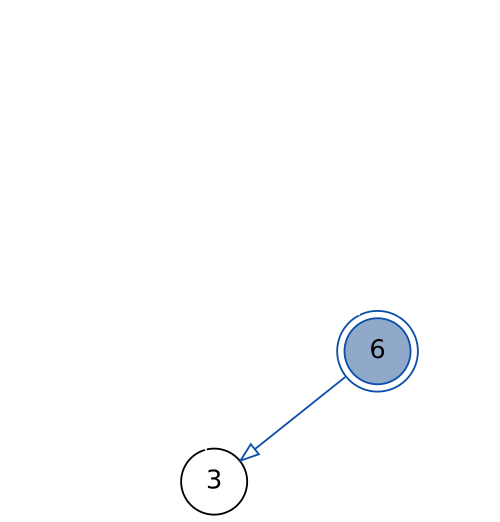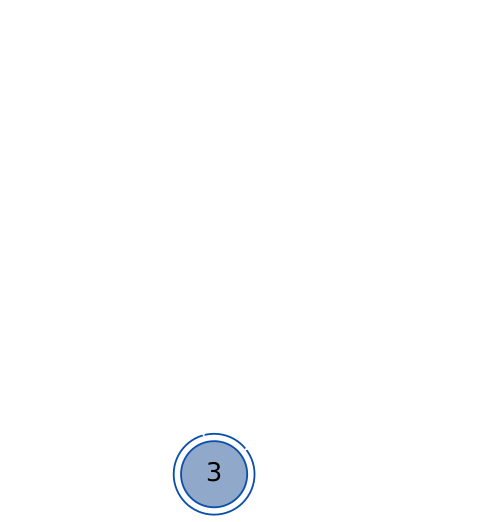Graph algorithms and data structures:
too imperative
- lists
- trees
- algebraic data types
Algebraic data types are inductive:
there is exactly one way to construct them
Consider lists:
data List a = Nil | Cons a (List a)one way to construct
Nil
Cons 1 (Cons 2 Nil)one way to deconstruct
case list of
Nil -> ...
Cons x xs -> ...Graph construction — implementation detail
nodes are not ordered
View graphs as inductive
Decompose into:
- a node
- its edges
- the rest of the graph
data Context =
Context [Node] Node [Node]
data View =
Context :& Graph(ignoring node and edge labels)
([4, 5, 6], 1, []) :& graph
the rest of the graph
match
recurse
([5, 6, 7], 2, []) :& graph
matchAny :: Graph -> Viewfoo :: Graph -> ...
foo graph | isEmpty graph = ...
foo (matchAny -> ctx :& rest) = ...match :: Node -> Graph -> Maybe View- matches a specific node
Nothingif not in graph- directed graph traversal
dfs :: [Node] -> Graph -> [Node]
dfs [] _ = []
dfs (x:xs) (match x -> Just (ctx :& g)) =
x : dfs (neighbors ctx ++ xs) g
dfs (_:xs) graph = dfs xs graphstack: []
result: []
stack: [4, 5, 6]
result: [1]
stack: [7, 5, 6]
result: [1, 4]
stack: [2, 3, 5, 6]
result: [1, 4, 7]
stack: [5, 6, 5, 6]
result: [1, 4, 7, 2]
stack: [6, 5, 6]
result: [1, 4, 7, 2, 5]
stack: [3, 5, 6]
result: [1, 4, 7, 2, 5, 6]
stack: [5, 6]
result: [1, 4, 7, 2, 5, 6, 3]
- see graphs as inductive
- use directed pattern matching
- write normal functional code
fgllibrary- labels
- directed edges
- slightly different API
- higher-order graph functions
- Generating Mazes with Inductive Graphs
- on jelv.is/blog
- “Inductive Graphs and Functional Graph Algorithms”
- Martin Erwig.
Journal of Functional Programming, Vol. 11,
No. 5, 467-492, 2001
- Martin Erwig.

